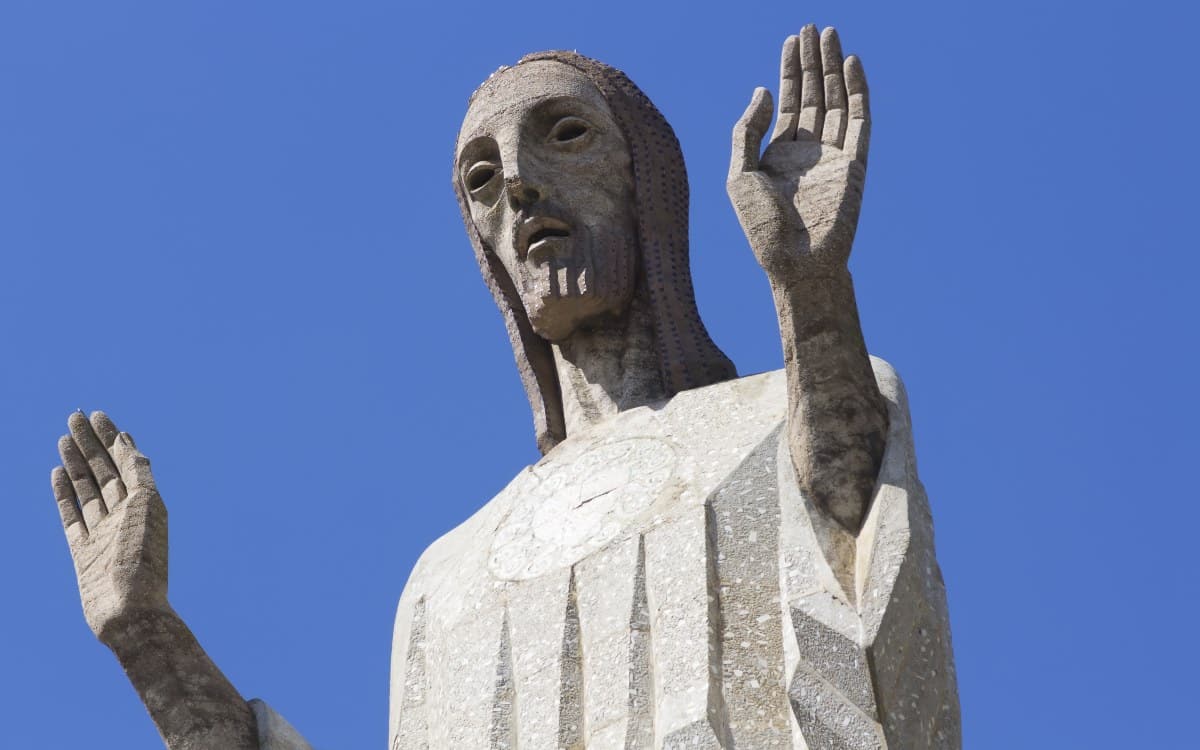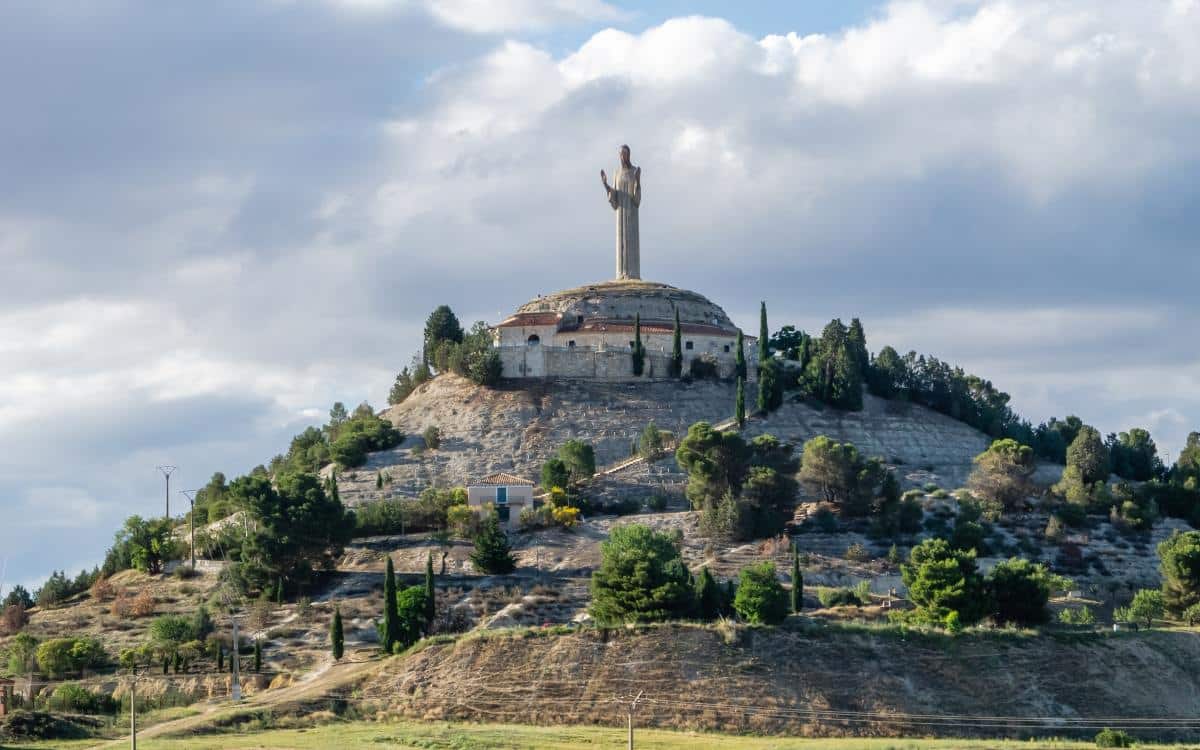
If you want to see the tallest Jesus in Spain, you will need to travel to the city of Palencia. This majestic and imposing 21-metre-high monument is the emblem of this city and watches over the plain from the heights of a hill. Let’s learn more about it!
On the 15th of June of 1930, the first stone of this sculptural work was placed. On February of the following year, after less than eight months of work, the Cristo del Otero (which literally translates to “Christ of the Hillock”) was finished. It weighed 392 tonnes at birth. And here is a curious fact: 1931 was precisely the year when Christ the Redeemer of Rio de Janeiro was inaugurated. The comparisons are inevitable.
Cristo del Otero, one of the tallest Jesus statues in the world and one of the most impressive sculptures in Spain, was created by a local sculptor, Victorio Macho (1887-1966), a precursor to contemporary sculpture in Spain. When this monument was built, the latest artistic trends were extremely linked to art deco, but they also found inspiration in avant-garde movements such as Cubism. This translates into the preference for geometric shapes that you can find in Christ’s clothes and the rotundity of the volumes. This rigid Christ actually shows a vivid facial expression and reminds of antique artworks, for example, works of Egyptian art.

The tallest Jesus statue in Spain. | Shutterstock
The commission for this work was made during the administration of General Primo de Rivera. The main idea was to cover the sculpture with tiles and bronze and use ivory and blue marble for the eyes. It was impossible to get the 187,000 pesetas (the former Spanish currency), a true fortune, and the budget was too modest. On the other hand, the initial project included keeping his arms open. The technical difficulties of this task couldn’t be ignored, even when the exact consequences were not known. For these reasons, a more stark appearance was chosen. It might be made out of concrete coated with granite and artificial stone, but it is still charmingly elegant.
Professor Segundo Fernández, born in Palencia, wrote the book that explores the initial opposition of the people in Palencia to this sculpture. They rejected its modern and strange shapes. Even the Town Council criticised Macho openly, more for his political ideology than for his work. And to top it all off, a bomb was placed in the entry to the statue in 1933. Luckily, it never exploded. It is believed it was supposed to attack the romería of this statue. Finally, Jesus’ hair was damaged when someone tried to remove the lightning rod that crowned the statue.

Cristo del Otero. | Shutterstock
A visit to this Jesus Christ offers even more attractions than the statue itself. We should highlight the viewpoint from which you can enjoy the great extension of Tierra de Campos. It is worth paying a visit to the hermitage of unmistakable whitewash that rests on top of numerous columns. You will also find the sepulchre of Victorio Macho here. A tiny museum was dedicated to the artist, where pictures of his projects, busts, and smaller statues are exhibited. The following text can be read in his tomb:
“My last journey:
Here, this Christ’s feet,
His creator came to rest.
His sculptor
Victorio Macho.
13-07-1966.”
This statue is especially important to Palencia on two very significant dates. It becomes the epicentre of a procession and a romería. In the evening of Palm Sunday, a confraternity guards the representations of Santísimo Cristo de la Vera-Cruz and Nuestra Señora del Dolor, or Our Lady of Sorrows, on their way to Cristo del Otero. They can be seen in different spots of this place praying the Rosary in a picture that perfectly portrays the essence of the Holy Week in Palencia.
The romería de Santo Toribio takes place in the spring, in April. Legend has it that Toribio went to Palencia so its people would abandon the heresy of Priscillianism. He was kicked out and looked for a shelter in the Santa María del Otero hermitage, and the Carrión River overflowed its banks and flooded the place terribly. Only after that moment did the people go to the hill in search of Toribio, who forgave them. Nowadays, the local authorities stone the people of Palencia symbolically, and they use bags filled with the typical bread and cheese to do so in a popular festivity declared of regional tourist interest in 2007.